|
|
Dr Livingstone, I presume ? Stanley en Livingstone. |
| The names of Stanley and Livingstone are often mentioned in one and the same breath because of their legendary meeting on March 21, 1871 in Ujiji, a small village on the shore of Lake Tanganyika in present-day Tanzania. | |
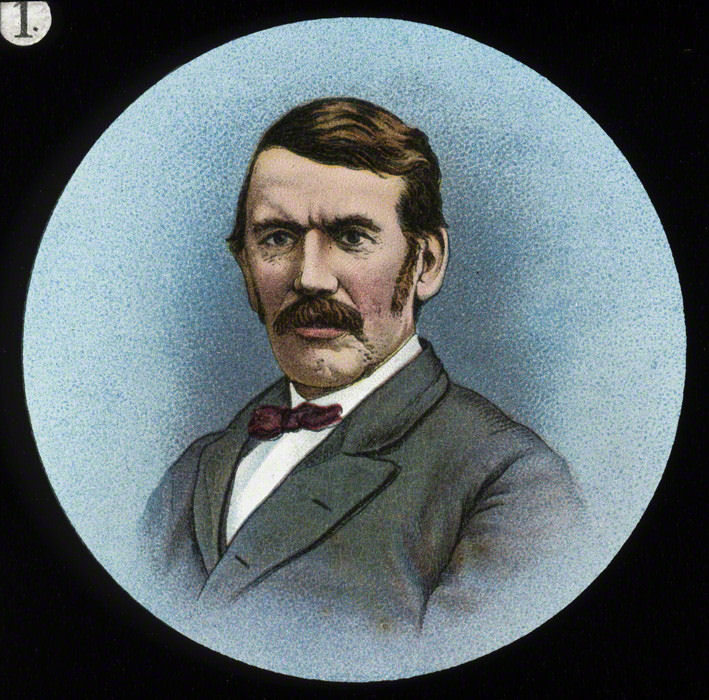 David Livingstone London Stereoscopic & Photographic Company. Glass magic lantern slide, circa 1900. 3 1/4 in. x 3 1/4 in. (83 mm x 83 mm). | |
| David
Livingstone was born on 19 March 1813 in the town of Blantyre, in a tenement building for the workers of
a cotton factory on the banks of the Clyde River, Scotland. He was the second of seven children born to Neil
Livingstone and his wife Agnes Hunter. David's father was very committed to his beliefs
and read extensively books on theology, travel and missionary enterprises. This rubbed off
on the young David, who became an avid reader, but he also loved scouring the countryside
where he looked for animals, plants and geological specimens in local limestone quarries. Livingstone experienced from age 10 to 26 in the local cotton mill before his studies at several Universities. Shortly after, he applied to join the London Missionary Society (LMS) and was accepted subject to missionary training. Livingstone hoped to go to China as a missionary, but the First Opium War broke out in September 1839 and the LMS suggested the West Indies instead. In 1840 Livingstone met a missionary, on leave from Kuruman, a missionary outpost in South Africa. Influenced by arguments that the African slave trade might be destroyed through the influence of legitimate trade and the spread of Christianity, Livingstone focused his ambitions now on Southern Africa. After several missions in the South he explored the African interior to the north in the period 1852–56 and was the first European to see the Mosi-oa-Tunya ("the smoke that thunders") waterfall, which he renamed Victoria Falls, after his monarch Queen Victoria. David Livingstone took a magic lantern with him to Africa, using it to tell and illuminate Bible Stories. Improved illuminants were used to project the magic lantern scenes for large audiences. He travelled light–guns, a box each for food, clothing, medicine, 'and a fourth box contained a magic lantern, which we found of much service.’ He came to Gonye Falls on the river Chobe. ‘Here, as elsewhere, all petitioned for the magic lantern, and, as it is a good means of conveying instruction, I willingly complied.’ |
|
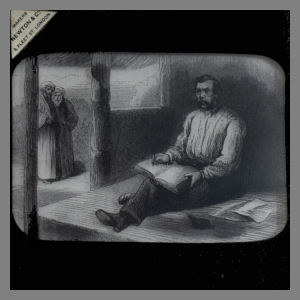 |
 |
| Livingstone writing his Journal. Slide made by Newton & Co., c 1890, 8.2 x 8.2 cm. | |
|
Later, further north at Shinte’s town, ‘Shinte was most anxious to see the pictures of the magic lantern, but I was so weakened by fever that I could not go for several days; when I went he had his principal men and the same crowd of court beauties near him as at the reception. The first picture exhibited was Abraham about to slaughter his son Isaac, the knife uplifted to strike the lad; the Balonda men remarked that the picture was much more like a god than the things of wood or clay they worshipped. I explained that this man was the father of a race to whom God had given the Bible, and that our Saviour came of his seed. The ladies listened with silent awe, but, when I moved the slide, the uplifted dagger moving towards them, they thought it was to be sheathed in their bodies instead of Isaac’s. “Mother! Mother!” all shouted at once, and off they rushed, tumbling pell-mell over each other, nor could we get one of them back again. Shinte, however, sat bravely through the whole, and afterwards examined the instrument with interest. An explanation was added after each exhibition, so that no one should imagine there was anything supernatural in it. It was the only mode of instruction I was ever pressed to repeat. The people came long distances, for the express purpose of seeing the objects and hearing the explanations.’ After Livingstone's death a set of 40 slides were produced about his remarkable life. The slides were stored in a solid wooden box, closed with a leather strap: |
|
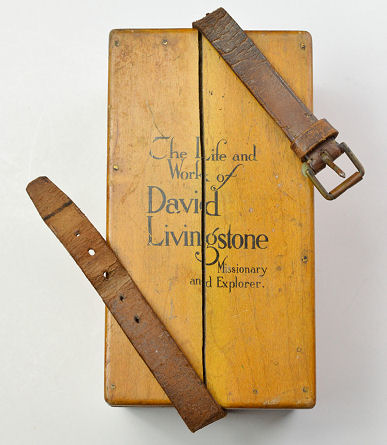 |
"The Life and Work of David
Livingstone, Missionary and Explorer" Magic Lantern Slide Set in wooden box. Highlights from Livingstone's life and travels.  Published by the London Stereoscopic & Photographic Company. Circa late 1800s. The slides have numbers in white circle in top-left corner. slides measures: 3 1/4" x 3 1/4". (82 mm x 82 mm). box measures: approx. 7 5/8" x 4 3/16". |
||
 |
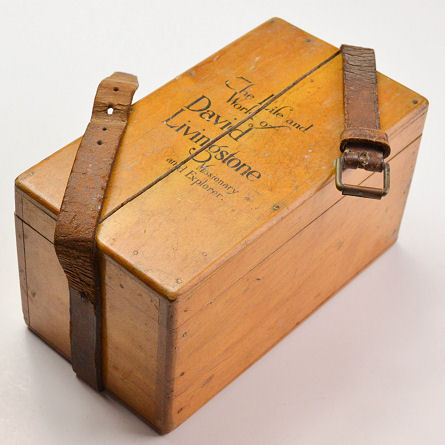 |
||
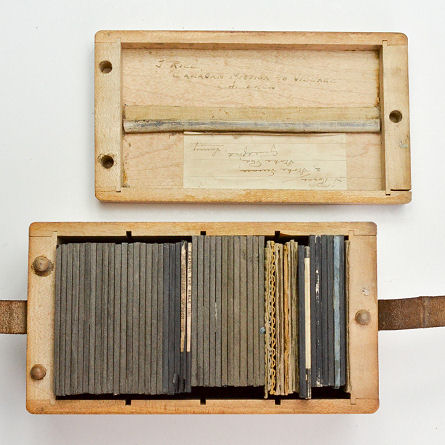 |
 |
||
|
Let's view those interesting slides now: |
|||
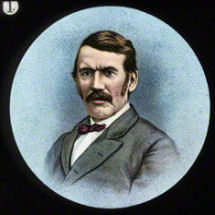 David Livingstone |
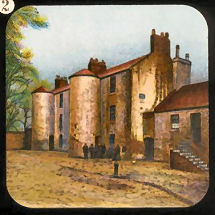 Home in which he was born |
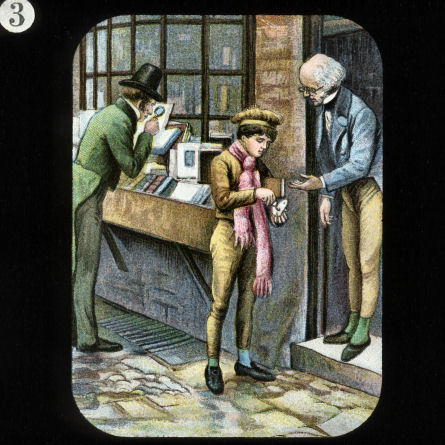 Buying a book |
|
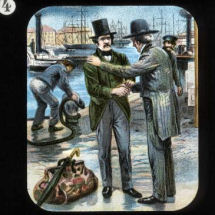 Farewell on the Broomielaw |
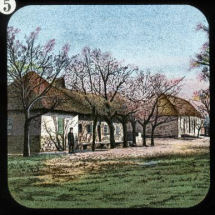 View of Kuruman |
||
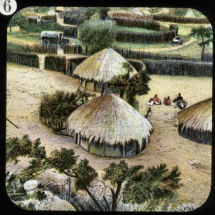 A Bechuana Village |
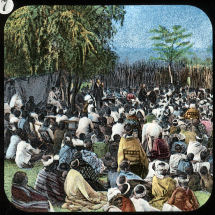 Bechuana Congregation |
 Khama |
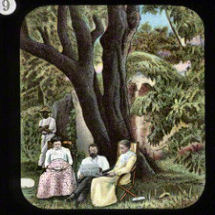 Almond Tree at Kuruman |
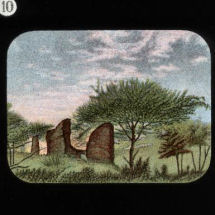 Ruins of House at Kolobeng |
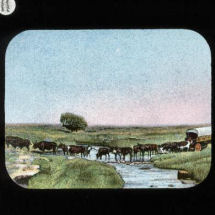 Waggon crossing River |
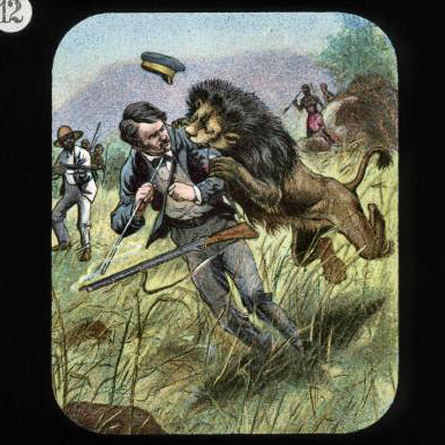 Livingstone and the Lion |
|
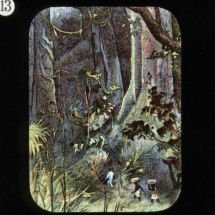 Scene in an Equatorial Forest |
 Preaching from a Waggon |
||
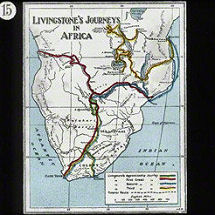 Map showing Travels |
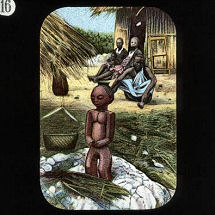 Fetish Image |
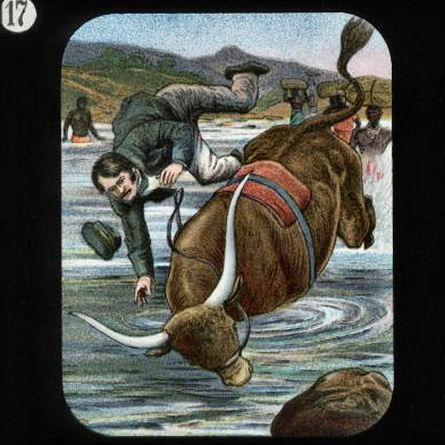 Thrown from an Ox |
|
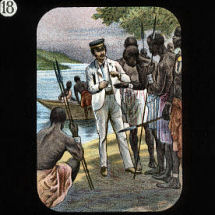 Showing Watch to Natives |
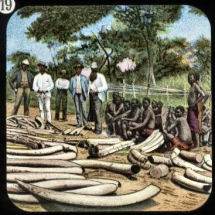 Ivory and Carriers |
||
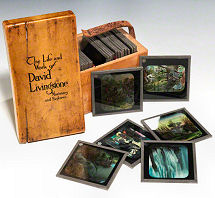 |
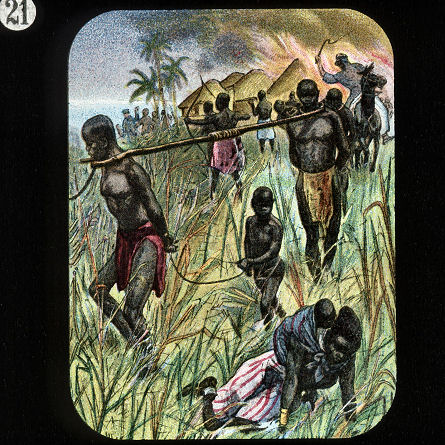 The Slave Gang |
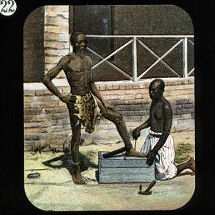 Liberating a Slave |
|
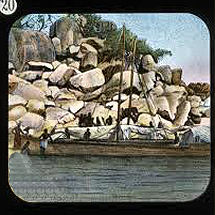 Slave Dhow |
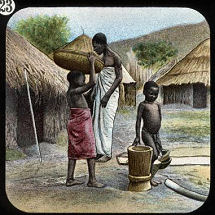 African Village Life |
||
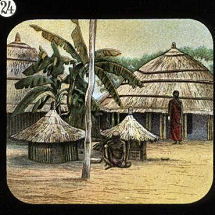 Spirit Huts |
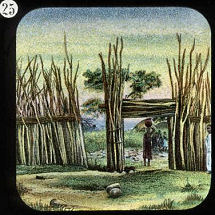 A Village Stockade |
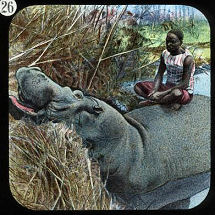 Hippopotamus |
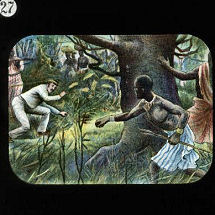 The Manyuema Ambush |
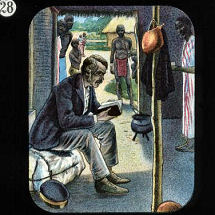 Reading the Bible |
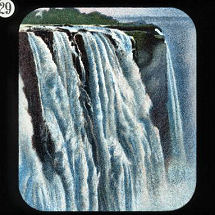 Victoria Falls |
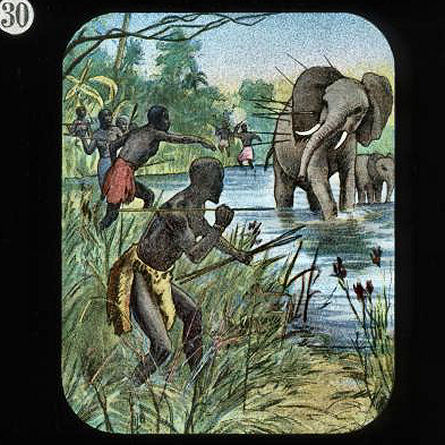 Elephant Protecting her Young |
|
 Livingstone sees the Queen |
 Loss of a Boat |
||
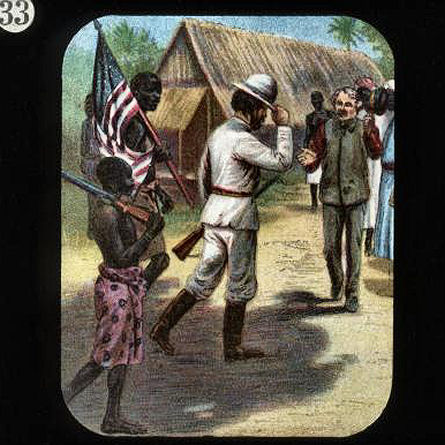 Livingstone and Stanley meet |
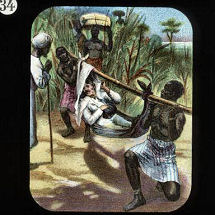 Livingstone carried in a Machilla |
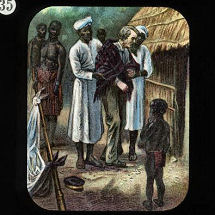 Being assisted to the Hut |
|
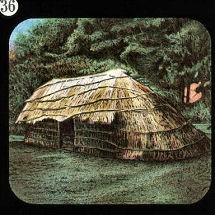 Model of the Hut |
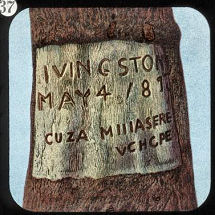 Inscription on Tree |
||
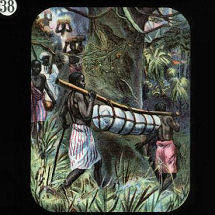 Carrying the Body to the Coast |
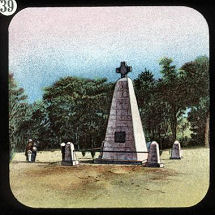 Monument in Africa |
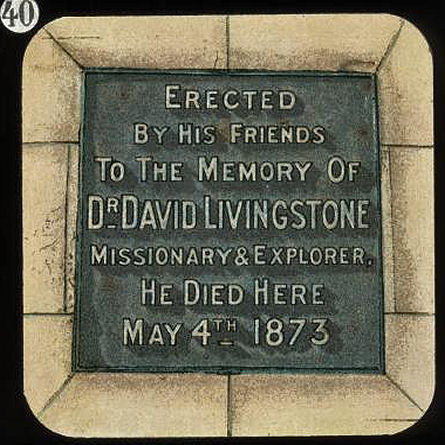 Inscription on Monument |
|
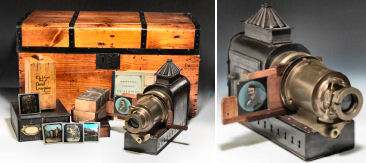 |
|||
|
Livingstone completely lost contact with the outside world for six years and was ill for most of the last four years of his life. The journalist and explorer Henry Morton Stanley, who had been sent to find him by the New York Herald newspaper in 1869, found Livingstone in the town of Ujiji on the shores of Lake Tanganyika on 10 November 1871, greeting him with the now famous words........ |
|||
|
'Dr Livingstone, I presume?'
to which he simply responded 'Yes', |
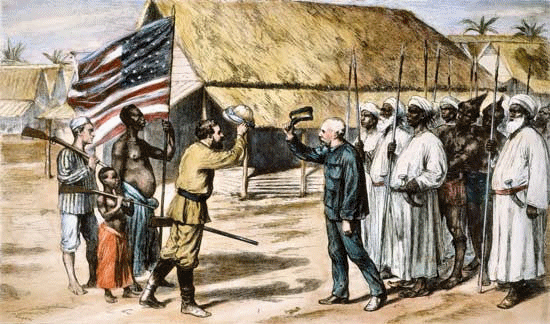 An illustration from Stanley's book How I Found Livingstone (1872), animated by the webmaster. |
|
Stanley in Africa (part 2) |
| |
©1997-2024 'de Luikerwaal' All rights reserved. Last update: 06-02-2024. |
|